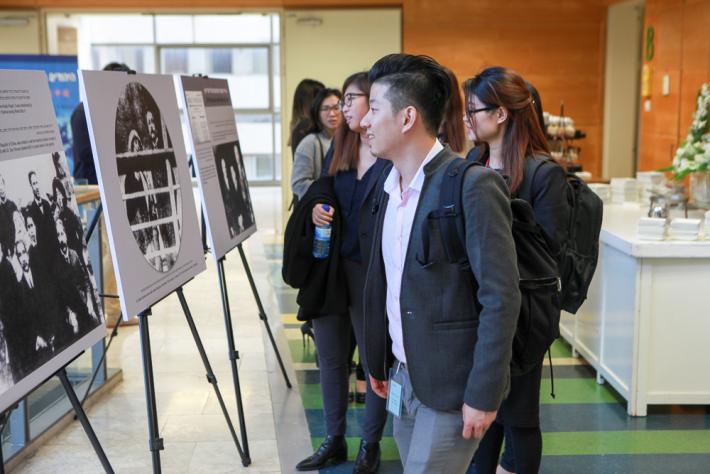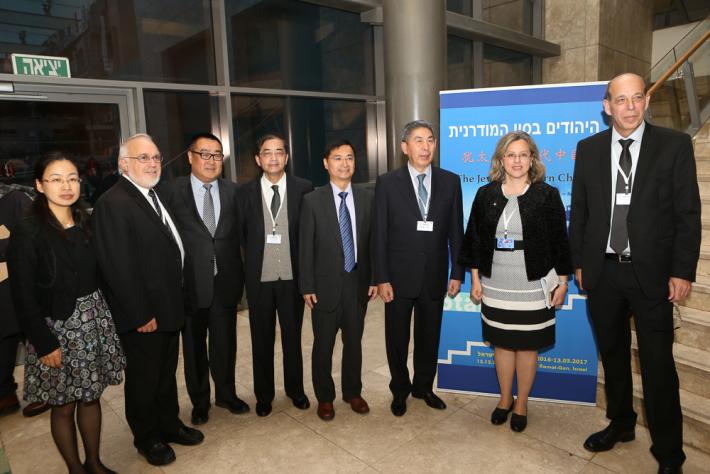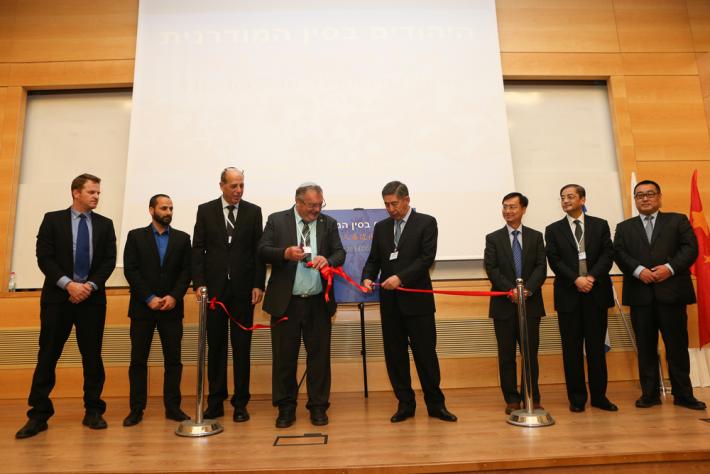Revitalizing the silk route
The exhibition “The Jews in Modern China” housed in the BINA building, is a fascinating attest to the unceasing bond between the two ancient peoples. The exhibition, open to the public during the first semester of 2017, presents rare historic and personal photographs and filmstrips, focusing on Jewish migration to China over the last two centuries, including refugees who escaped Nazi Germany.
China’s Jewish connection
Marking 25 years of diplomatic relations between Israel and China, the exhibition reflects a historic and long- lasting friendship shared by thousands of Jews and Chinese - a joint initiative by Bar-Ilan University, the Chinese Embassy in Israel, and the Chinese International Cultural Exchange Center (CICER). A heart-warming Gala ceremony held in December 2016 for the opening of the exhibition, was attended by Israeli and Chinese government and academia officials, as well as the BIU president and faculty.
lasting friendship shared by thousands of Jews and Chinese - a joint initiative by Bar-Ilan University, the Chinese Embassy in Israel, and the Chinese International Cultural Exchange Center (CICER). A heart-warming Gala ceremony held in December 2016 for the opening of the exhibition, was attended by Israeli and Chinese government and academia officials, as well as the BIU president and faculty.
Hundreds of rare photographs and documentary film strips adorning several floors of the Nanotechnology Center at BIU, focus on three periods of Jewish migration to China in modern times: The first, in the 1840’s, included Sephardi Jewish merchants from Baghdad, Bombay, and Singapore, seeking commerce in China, living and working in harmony in Shanghai and Hong Kong.
Rising anti-Semitism in the late 19th century in Russia and Eastern Europe resulted in the second wave of migration which comprised millions of Ashkenazi Jews who fled the Pogroms, and settled mainly in and around Harbin, near the Russian border. Embracing China as their second homeland, many integrated into Chinese society, contributing to its economic and cultural development.
The years 1933-1941 mark the third migration, when over 50,000 European Jews found a safe haven in China, after escaping the horrors of the Nazi regime, at a time when other countries closed their gates to Jewish refugees, and China itself endured the brutal Japanese invasion into its country.
A fascination with Israel’s nano-nation
The driving force behind the exhibition is Dr. Danielle Gurevitch, Director of the Asia Desk in the Office of the VP of Research at Bar-Ilan University, and chair of the Dr. Naim Dangoor Program for Universal Monotheism at BIU.
“China has always been fascinated by the West. Interestingly, Israelis have been equally intrigued by China, and, while the demand for the humanities is declining, registration for South-East Asia studies in particular is on the rise”, said Gurevitch. “There is great interest by the Chinese in Israel’s advanced technological research, and in tapping into its unique ‘Start-up nation’ spirit. This holds a potential for collaboration of unprecedented proportions between Israeli academic institutes and the thousands of Chinese universities and researchers”, she said.
Fusing dumplings with Kreplach

Despite the huge differences in size between Israel and China, there are many similarities between the two countries. These two ancient civilizations have scrupulously preserved their culture and language, and have always put strong emphasis on family and education. The Chinese also share a similar destiny with the Jews, having often suffered persecution and prejudice throughout history, including nearly 35 million casualties in WW2.
In addition to the unique bond between the two nations, historically, there was no antisemitism in China, which contributed to mutual respect and admiration, resulting in Jews enjoying equal rights and living peacefully with the local population.
A covalent bond between matter and spirit
The BINA building - chosen to house the exhibit - serves as a bridge between science and the humanities. As global challenges such as energy and health become increasingly interconnected, an interdisciplinary approach is required – one that blurs the lines between science and humanities.
A wise Chinese saying, taken from a poem by 8th century poet Wang Zhihuan, translates as “To see farther, you need to stand higher”, and is often used to encourage people to set higher goals.
Such inspiring initiatives as this exhibition pave the way not only for strengthening scientific research and industrial ties between Israel and other countries, but also for cultivating friendships with other cultures which hold untapped potential for yielding unforeseen results.

Last Updated Date : 20/04/2021



